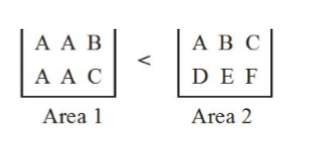Which of the following structures present in a gymnospermic seed represent the future sporophytic generation? (a) Perisperm (b) Tegmen (c) Radicle (d) Endosperm (e) Plumule (f) Testa. Mark the correct option
(a), (c) & (e)
(a), (c), (d) & (e)
(c) & (e)
(b), (c), (e) & (f)
To determine which structures in a gymnospermic seed represent the future sporophytic generation, we need to analyze each option provided in the question.
1. Understanding Sporophytic Generation:
- The sporophytic generation is the diploid phase in the plant life cycle that develops from the fertilized egg (zygote). In gymnosperms, this generation includes structures that will eventually grow into the mature plant.
2. Analyzing Each Structure:
- (a) Perisperm: This is a tissue that provides nutrition to the developing embryo. It is triploid (3N) and does not represent the sporophytic generation. (Not correct)
- (b) Tegmen: This is a protective layer found in seeds but does not contribute to the sporophytic generation. It is part of the seed coat and does not develop into the plant. (Not correct)
- (c) Radicle: The radicle is the embryonic root that will develop into the future root system of the plant. It is part of the sporophytic generation as it is diploid. (Correct)
- (d) Endosperm: This tissue provides nourishment to the developing embryo and is triploid (3N). It does not represent the sporophytic generation. (Not correct)
- (e) Plumule: The plumule is the part of the embryo that will develop into the shoot system of the plant. It is also part of the sporophytic generation as it is diploid. (Correct)
- (f) Testa: The testa is the seed coat and is part of the protective structures of the seed. It does not contribute to the sporophytic generation. (Not correct)
3. Final Evaluation:
- Based on the analysis, the structures that represent the future sporophytic generation in a gymnospermic seed are the Radicle (c) and Plumule (e).
Correct Options:
- (c) Radicle
- (e) Plumule
- The sporophytic generation is the diploid phase in the plant life cycle that develops from the fertilized egg (zygote). In gymnosperms, this generation includes structures that will eventually grow into the mature plant.
- (a) Perisperm: This is a tissue that provides nutrition to the developing embryo. It is triploid (3N) and does not represent the sporophytic generation. (Not correct)
- (b) Tegmen: This is a protective layer found in seeds but does not contribute to the sporophytic generation. It is part of the seed coat and does not develop into the plant. (Not correct)
- (c) Radicle: The radicle is the embryonic root that will develop into the future root system of the plant. It is part of the sporophytic generation as it is diploid. (Correct)
- (d) Endosperm: This tissue provides nourishment to the developing embryo and is triploid (3N). It does not represent the sporophytic generation. (Not correct)
- (e) Plumule: The plumule is the part of the embryo that will develop into the shoot system of the plant. It is also part of the sporophytic generation as it is diploid. (Correct)
- (f) Testa: The testa is the seed coat and is part of the protective structures of the seed. It does not contribute to the sporophytic generation. (Not correct)
- Based on the analysis, the structures that represent the future sporophytic generation in a gymnospermic seed are the Radicle (c) and Plumule (e).
- (c) Radicle
- (e) Plumule
Topper's Solved these Questions
Similar Questions
Which of the following expression represents the correct rate of given reaction? A+2B+3Crarr4D+5E
View SolutionWhich of the following feature(s) is/are exclusive in angiosperms :-
(A) Seed
(B) Double fertilization
(C) Female gametophyte
(D) Presence of flowers
(E) Formation of endosperm
(F) Presence of vessels and companion cells
Tick the right one :-
View Solution
Knowledge Check
Which of the following feature(s) is/are exclusive in angiosperms :-
(A) Presence of fruit
(B) Double fertilization
(C) Female gametophyte
(D) Presence of flowers
(E) Formation of endosperm
(F) Presence of vessels and companion cells
Tick the right one ,-AA, B, C, EBB, C, D, ECB, D, E, FDA, B, D, FWhich of the following is correct regarding species diversity ? (Here A, B, C, D, E and F are bird species)
A B
B C
C DAll are correct
DAll are correctHow many chromosomes are present in each of the following with respect to Maize plant respectively (a) Leaf epidermal cell (b) Antipodal cell (c) Endosperm cell (d) Generative cell (e) Egg cell (f) Megaspore (g) Microspore mother cell
A10, 20, 10, 10, 10, 20, 30B20, 10, 30, 10, 10, 10, 20C20, 10, 10, 10, 20, 30, 10D30, 10, 20, 10, 20, 10, 10.
In the given structure of the carbonhydrate, which of the following are used while naming it ?
(a) Pentose (b) Hexo (c ) Aldose
(d) Ketose (e ) Pyranose (f) Furano

View SolutionWhere would the following structures be found in a cell ?
(a) microtubules , (b) thylakoid , (c) F0−F1 complex , (d) ribosomes , (e) nucleolus
View SolutionHow many of the following features are associated with pea? (a) Basal placentation (b) non-endospermous seed (c) leaf sendrilis (d) Moncadalphous stamens (e)papllionaceous corolla (f) Actinomorphic flowers
View SolutionWhich of the following orders for electron affinity is/are correct?
(a) N+>O+
(b) Cl>F
(c) B>Be
(d) Li<B
(e) N>P
(f) C>N
View SolutionDicots and monocots are two classes under the divison- angiosperms. Which of the following statements are correct about their seeds?
i. The scutenllum is cotyledon in dicots.
ii. Generally, dicots have non-endospermic seeds.
iii. Coleoptile covers the plumule in monocots.
iv. The heart-shaped embryo is seen in monocots.
View Solution
